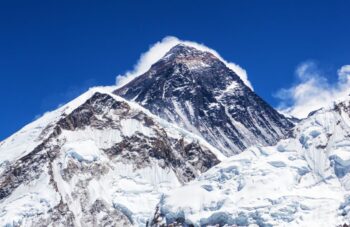Mount Everest North Face
The Mount Everest North Face is a legendary and formidable route that has captivated the hearts and minds of mountaineers for decades. Situated on the Tibetan side of the mountain, the North Face presents an arduous and technical challenge that tests the limits of human endurance, skill, and determination.
Climbing the North Face of Everest is a high-risk and demanding endeavor. The route starts at the Rongbuk Glacier and ascends through the treacherous Khumbu Icefall, a constantly shifting maze of towering ice seracs and deep crevasses. Negotiating this perilous section requires careful navigation, rope techniques, and a keen eye for potential hazards.
After conquering the Icefall, climbers continue their ascent through the Western Cwm, a vast and barren glacial valley that leads to Camp 2. From here, the route becomes increasingly steep and technically challenging as climbers make their way up the Lhotse Face, a 1,125-meter wall of icy slopes with sections of exposed blue ice.
The true test awaits at the Yellow Band, a prominent rock formation that poses both physical and mental challenges. Climbers must carefully navigate the tricky sections, often utilizing fixed ropes for safety. Beyond the Yellow Band lies the Geneva Spur, another steep and exposed ridge that requires careful footwork and concentration.
The most iconic and infamous obstacle on the North Face is the Second Step, a nearly vertical rock cliff located at an altitude of approximately 8,600 meters. Climbers must ascend this challenging section using ladder systems, which are often fixed in place by Sherpa support teams. Conquering the Second Step demands strength, agility, and mental fortitude.
Above the Second Step, the route continues along a narrow ridge known as the Summit Ridge, leading to the final push towards the highest point on Earth, the summit of Mount Everest. This final section, although less technically demanding, is no less daunting due to the extreme altitude, harsh weather conditions, and the physical and mental fatigue that has accumulated throughout the expedition.
Climbing the North Face of Everest requires extensive training, physical fitness, and prior high-altitude mountaineering experience. It demands careful acclimatization to mitigate the risks associated with extreme altitude and ensure the best chance of success. Proper gear, including specialized clothing, equipment, and supplemental oxygen, is essential for tackling the extreme conditions encountered on the North Face.
Despite the challenges, the rewards of scaling the North Face of Everest are immeasurable. Climbers are treated to breathtaking panoramic views of the surrounding Himalayan peaks, including Lhotse, Makalu, and Cho Oyu. Standing atop the summit of Everest, at an elevation of 8,848 meters, is an unparalleled achievement that represents the pinnacle of mountaineering.
However, it is crucial to note that attempting the North Face is an undertaking fraught with risks. The extreme altitude, unpredictable weather, and technical difficulties make it one of the most dangerous mountaineering routes in the world. Proper preparation, including thorough training, experienced guides, and a strong support team, is vital for the safety and success of any expedition.
The Mount Everest North Face remains a symbol of human ambition, adventure, and the relentless pursuit of conquering the impossible. It continues to attract brave and skilled mountaineers who are willing to push themselves to the limits in pursuit of reaching the summit of the world’s highest mountain.
Itinerary
Include / Exclude
Cost Includes:
Cost Excludes:
Price per person
Usefull Information
Equipment List





Leave a Reply